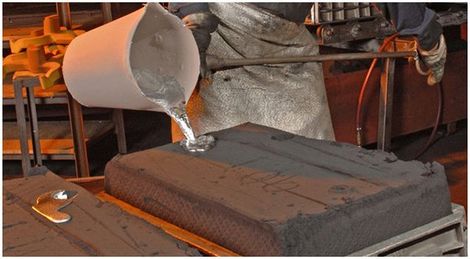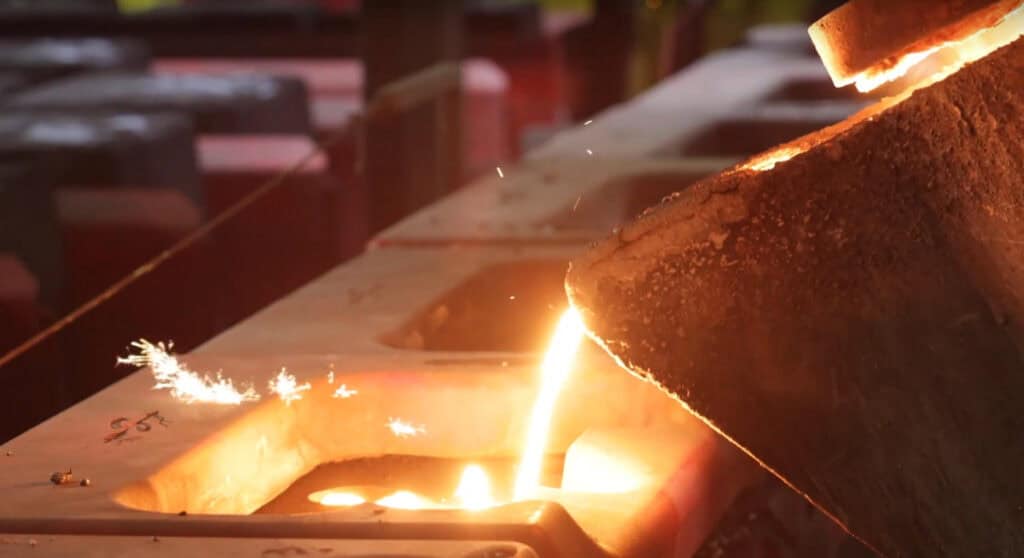Discover the Cutting-edge Methods Utilized in a Metal Foundry for Superior Casting Outcomes
In today's competitive production landscape, metal foundries are significantly adopting cutting-edge techniques to enhance casting results - Aluminum Foundry. Advanced computer simulations enable for accurate modeling of molten metal habits, while 3D printing makes it possible for quick manufacturing of complex molds. Additionally, eco-friendly products and automation simplify operations. These advancements promise considerable renovations in effectiveness and quality control. However, the effect of these innovations on sustainability and manufacturing practices remains to be totally checked out
Advanced Computer System Simulations in Metal Casting
Advanced computer system simulations have actually revolutionized the metal casting process by enhancing precision and efficiency. These advanced tools enable designers to produce online versions of cast parts, allowing them to predict the actions and assess of molten metal throughout the spreading stage. By simulating numerous specifications such as temperature, circulation price, and cooling rates, manufacturers can determine potential defects before physical production begins.
This positive strategy minimizes waste and minimizes pricey errors, inevitably leading to boosted item top quality. In addition, simulations help with the optimization of mold layouts, making certain that they fulfill the specific requirements of each task. The combination of computational fluid dynamics (CFD) and limited element evaluation (FEA) further adds to the precision of these simulations, supplying insights that were formerly unattainable. Consequently, progressed computer system simulations have become an essential component of contemporary metal foundries, considerably advancing the industry's abilities.
3D Printing for Mold And Mildews and Patterns
3D printing has actually become a groundbreaking method for developing molds and patterns in the metal foundry market. This technology allows the quick manufacturing of complex geometries that traditional manufacturing approaches have a hard time to achieve. By utilizing additive production, foundries can create intricate designs with reduced lead times and product waste. The capacity to create molds as needed permits for better flexibility in layout models, assisting in faster prototyping and alterations.
Furthermore, 3D printing can make use of a range of products, consisting of plastics and steels, customized to particular casting demands. This versatility boosts the precision of molds, causing premium spreading results with boosted surface area coatings. Furthermore, the decrease in the number of parts called for simplifies setting up processes, additionally enhancing manufacturing efficiency. As foundries continue to take on 3D printing, they are poised to redefine market requirements, leading the method for advancement and improved performance in metal casting operations.
Eco-Friendly Products and Processes
As the metal foundry sector faces raising pressure to reduce its environmental footprint, the fostering of eco-friendly products and processes has come to be crucial. Factories are now discovering lasting choices to traditional products, such as making use of bio-based binders and recycled steels. These products not just minimize waste yet additionally lower energy intake during production.
Furthermore, developments in sand casting strategies have actually brought about the use of synthetic sands that are much less hazardous to the setting. Shops are additionally informative post applying ingenious processes like molten metal therapy that reduces emissions and enhances the top quality of cast products.
Furthermore, water-based finishes have actually replaced hazardous solvents, advertising a safer job atmosphere (Aluminum Foundry). By integrating these eco-friendly methods, metal foundries can considerably decrease their environmental Continue impact while preserving top quality casting results. This shift not only profits the environment but additionally lines up with the growing customer need for lasting manufacturing options
Automation and Robotics in Foundry Workflow
While the metal foundry market embraces innovation, the assimilation of automation and robotics is changing procedures considerably. Automated systems simplify procedures such as mold and mildew making, metal pouring, and casting completing, significantly enhancing performance. Robotics promote the handling of heavy products, decreasing the danger of office injuries and ensuring more secure settings.

Additionally, using automated led cars (AGVs) enhances product transportation within facilities, making certain prompt distribution of components to suitable workstations. By executing these technologies, foundries can adjust to varying demands with better agility, ultimately bring about boosted earnings and competitiveness in the marketplace. As automation and robotics remain to evolve, they hold the possible to redefine standard foundry methods and drive more innovations in casting techniques.
Real-Time Tracking and Top Quality Control Techniques
The innovations in automation and robotics have led the means for more sophisticated strategies to quality assurance in metal foundries. Real-time tracking systems utilize advanced sensors and data analytics to track essential specifications throughout the spreading procedure. These systems continuously analyze variables such as product, temperature level, and pressure structure, making it possible for immediate discovery of deviations from established standards.
Quality assurance methods currently incorporate artificial intelligence algorithms that examine historical information to forecast possible issues before they occur. This aggressive method decreases waste and improves overall production efficiency. Furthermore, integrated responses loops enable rapid adjustments, ensuring that each spreading fulfills strict quality needs.
The implementation of electronic doubles-- virtual replicas of physical properties-- has likewise reinvented high quality guarantee, allowing designers to replicate and optimize processes in real-time. Together, these ingenious methods greatly enhance the reliability and quality of castings, setting new market requirements in metal foundry operations.
Frequently Asked Questions
What Kinds of Metals Are Typically Cast in Shops?
Frequently cast steels in foundries consist of aluminum, bronze, brass, and iron. Each metal shows one-of-a-kind properties, making them appropriate for numerous applications, such as auto components, machinery, and visit homepage artistic sculptures, improving their versatility in manufacturing.

For how long Does the Casting Refine Normally Take?
The spreading procedure generally takes a number of hours to days, relying on variables such as the complexity of the mold, sort of metal utilized, and cooling needs. Each phase affects the overall period markedly.
What Precaution Are in Area for Foundry Employees?

Exactly how Are Defects in Castings Identified and Addressed?
Flaws in spreadings are determined via visual assessments and non-destructive screening techniques. When identified, foundry employees resolve them by refining procedures, readjusting material structures, and carrying out restorative procedures to assure high quality and conformity with criteria.
What Is the Expense Array for Metal Casting Providers?
The expense array for metal casting solutions normally ranges $1 to $10 per pound, depending on factors such as material type, intricacy of the design, and manufacturing volume, affecting total prices significantly.
In today's affordable manufacturing landscape, metal foundries are increasingly embracing ingenious methods to boost casting outcomes. As the metal foundry industry deals with raising stress to decrease its environmental footprint, the fostering of green materials and procedures has actually become necessary. Factories are now exploring lasting alternatives to typical materials, such as using recycled metals and bio-based binders. By integrating these green practices, metal foundries can noticeably lower their environmental effect while preserving premium spreading results. The advancements in automation and robotics have actually paved the method for much more advanced approaches to high quality guarantee in metal foundries.